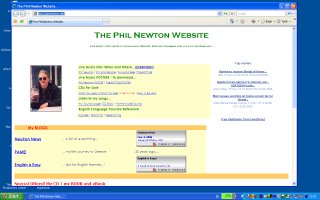Millions of people around the world are now trying to work out what this coin could possibly be!

It's not a crown, nor is it a florin or a shilling...
The date on the back is 1920 which means it is 50% silver!! If it had been a year older it would have consisted of 95% silver!! Bloody hell, they really made coins back in those days.
In the useless clue in the previous post I said it was worth the same as five tanners; a tanner is (was) a sixpenny bit... so we are talking about a coin which is worth 30d (that is 30 "old" pence - the
d stands for
pence - don't ask
). Divide that by 12, as there were 12d in a shilling, and you get 2/6 -
two and six - or as my dad used to say
half a dollar (<- clue).
If I may be permitted a quick aside/rant... this is my problem with metric, decimalised centigradual measuring systems - they are so BORING! It's all 10s and 100s and 1000s!
Pre decimalisation in England we had 240 pence in a pound.
240! Now there's a number you can get your teeth into!
12 pence was a shilling - which is why we had sixpenny bits - half a shilling. There was a threepenny bit too (quarter of a shilling?? Ok?)
20 shillings was a pound - BRILLIANT!
And then there was a Guinea which was one pound and one shiling: 21/-. Furniture shops and car showrooms always had prices in Guineas for the same reason that everything now is 9.
99 or 199.
99 - you thought the article cost 399 pounds...but it turned out to be 399 Guineas which is 399 pounds
PLUS 399 shillings.
Right, anyway, numismatists or oldmismatists... what is it?
 I forgot to post the solution!
I forgot to post the solution! I forgot to post the solution!
I forgot to post the solution!

 ...real money? On the right here, opposite a "new" penny, this is a very old something.
...real money? On the right here, opposite a "new" penny, this is a very old something.
 Cor blimey, that's my mum with me, back... oh, about twenty years ago, ahem... or is it a hundred?
Cor blimey, that's my mum with me, back... oh, about twenty years ago, ahem... or is it a hundred?
 This is at Munich airport just before Bid set off for London and then India...
This is at Munich airport just before Bid set off for London and then India...

